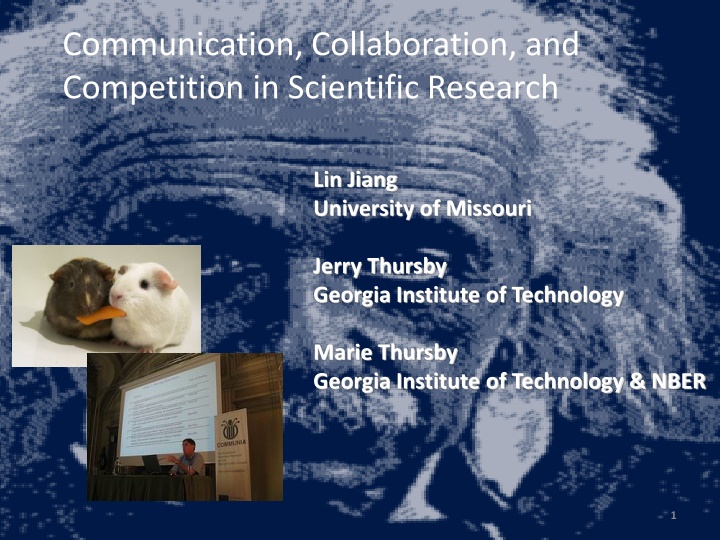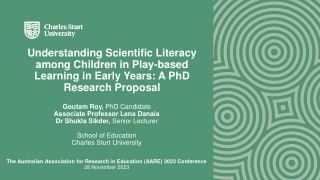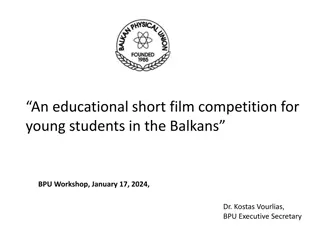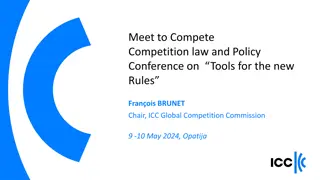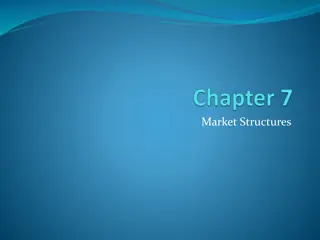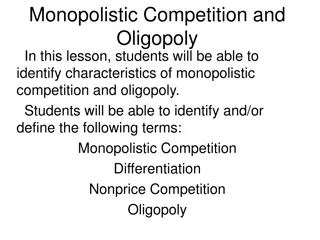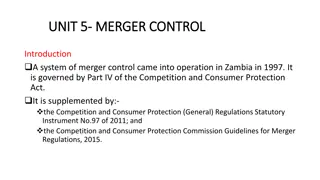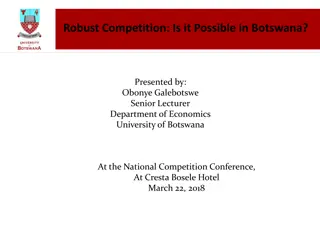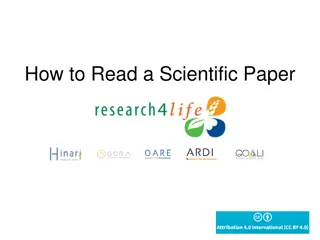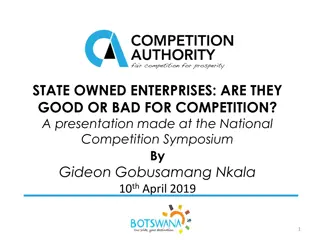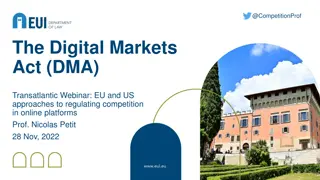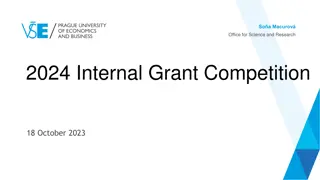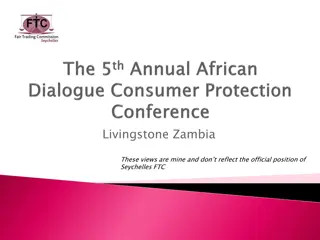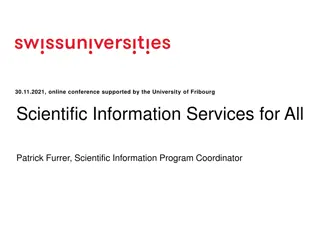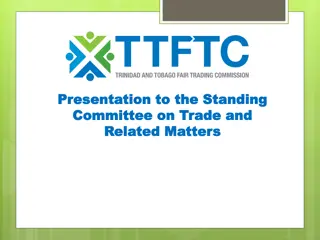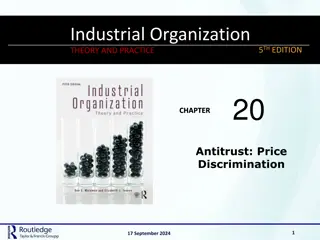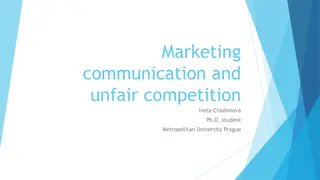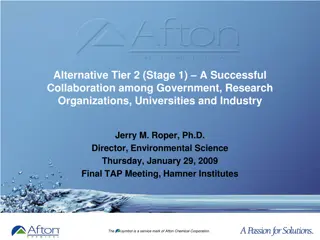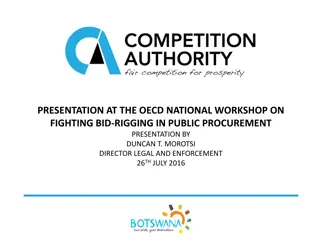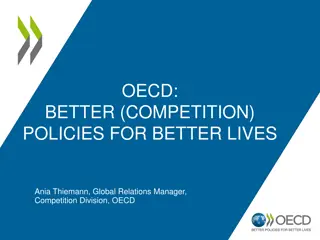Communication, Collaboration, and Competition in Scientific Research
"Exploring the dynamics of communication, collaboration, and competition in scientific research through game theoretic models and surveys among academic researchers across disciplines. Discusses the impact of sharing, collaboration, and competition on research outcomes and relationships among researchers."
Download Presentation

Please find below an Image/Link to download the presentation.
The content on the website is provided AS IS for your information and personal use only. It may not be sold, licensed, or shared on other websites without obtaining consent from the author.If you encounter any issues during the download, it is possible that the publisher has removed the file from their server.
You are allowed to download the files provided on this website for personal or commercial use, subject to the condition that they are used lawfully. All files are the property of their respective owners.
The content on the website is provided AS IS for your information and personal use only. It may not be sold, licensed, or shared on other websites without obtaining consent from the author.
E N D
Presentation Transcript
Communication, Collaboration, and Competition in Scientific Research Lin Jiang University of Missouri Jerry Thursby Georgia Institute of Technology Marie Thursby Georgia Institute of Technology & NBER 1
Prior Research Sharing Among Competing Researchers Paper I: HJTT Survey of UK and German Bio-scientists willingness to share Simple game theoretic framework of 2 situations Private sharing of materials, methods, algorithms Public presentation of intermediate results Different trade-offs & incentives in the two contexts Reciprocity important in former Credit & feedback vs. risk of misappropriation in latter Competition in both reduces sharing, ceteris paribus Life cycle and lab size effects differ in the two contexts 2
Communication, Collaboration, and Competition in Scientific Research Game Theoretic Models: Competition/Collaboration Model Disclosure can lead to competition which is undesirable. Collaboration can result from disclosure. Mathematician Model No credit for a discovery until entire problem solved. Competition can lead to completion so competition is desirable. Research Leader Model Entry of other researchers (competitors) enhances the reputation of the focal researcher. They are seen as leaders so competition is desirable. Survey: Survey of academic researchers across disciplines that mirrors the above models. 3
Competition/Collaboration Model Focal Researcher makes discovery of partial value in solving a problem. There are 2 types of other researchers Trusted colleagues can be trusted not to compete General colleagues who might decide to compete Two decisions: Whether to share with general colleagues Whether to collaborate with either a trusted or a general colleague (if they are willing) Tradeoffs in generally sharing Benefits: a) reputational credit from general colleagues for the initial discovery b) possibly find a collaborator Risks: engaging rivals who may have better talents or resources. 4
The Competition/Collaboration Model Players: Focal Researcher, Trusted Colleagues, General Colleagues Can vary in quality/resources (i, t, g) Each working on different trajectory V base value of a publication (Vi, Vt, Vg) Focal Researcher has made a random discovery r Decides to share with t or g (there are n general colleagues) Decides whether to collaborate with t or g 5
Competition/Collaboration Model Includes opportunity costs of working on the project (base value is k) and that cost reflects time saving if collaborate and a cost of coordination If collaborate, then value of solution is the maximum quality times V. Competition reduces chances focal researcher wins Competitors face a cost of replication (s) 6
Simulation Results: Competition Model Simulation with parameters given numerical values. without loss, can consider the ratio k/V Small -> important or novel discovery Large -> incremental discovery Vary over qualities i, g, t Vary over amount of initial discovery r Vary over replication costs s Vary over number of general colleagues Total cases considered > 4 million Consider results for three conditions: ISMARTER: i > t and i > g IDUMBER: i < t and i < g IBET_GIT: g < i <t IBET_TIG: t < i <g
Outcomes ISMARTER IBET_GIT IBET_TIG IDUMBER GS_G 2.20% 0.10% 23.40% 13.10% GS_T 2.20% 28.00% 0.00% 20.80% GS_N 82.40% 61.80% 55.20% 49.20% TS_T 0.00% 0.40% 0.00% 3.20% TS_N 13.20% 9.90% 21.50% 13.70% If collaborate with trusted colleague, then typically GS
Outcomes ISMARTER IBET_GIT IBET_TIG IDUMBER GS_G 2.20% 0.10% 23.40% 13.10% GS_T 2.20% 28.00% 0.00% 20.80% GS_N 82.40% 61.80% 55.20% 49.20% TS_T 0.00% 0.40% 0.00% 3.20% TS_N 13.20% 9.90% 21.50% 13.70% Collaborate less likely than not collaborate (IDUMBER close) Collaborate typically when t or g greater than i
The Mathematician Model Focal researcher benefits from introducing competition since credit for initial discovery comes only with a complete solution. Do not distinguish between trusted and general colleagues since competition is welcomed. Does not consider collaboration.
The Research Leader Model Focal researcher gains reputation if there is entry (competition): the focal researcher is a research leader (they have caused others to change their research) No distinction between trusted and general colleagues and collaboration not modeled. Unlike the prior models the disclosure decision is not now or never. The focal researcher decides on how much of the project to complete before disclosure. Entry decision depends on how much of the problem has been solved. All else equal, disclosure by a focal researcher who are much more capable than the general colleagues will lead to more entry.
Importance of the Project k/V Competition/Collaboration Incremental projects more likely to lead to collaboration. Incremental discovery more likely to be generally disclosed Mathematician Model Novel projects more likely to be disclosed. Research Leader Model (Complicated) When i is much greater than g, a very novel project is less likely to be disclosed, otherwise a very novel project is more likely to be disclosed.
